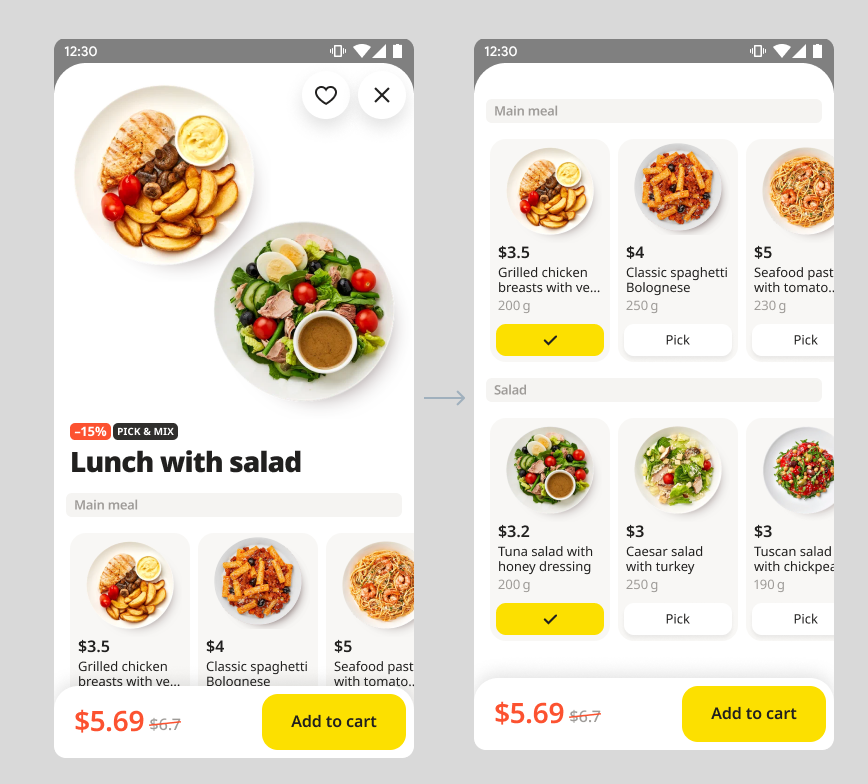Yango Tech and Surtifamiliar Partner for Next-Generation AI-Powered Grocery E-commerce in Colombia


Staying competitive in business requires more than just offering a great product or service. It demands agility and adaptability, especially when it comes to pricing strategies. Dynamic pricing has emerged as a powerful tool for businesses seeking to optimize revenue in a constantly evolving marketplace.
By adjusting prices in real-time based on factors such as demand, competitor pricing, and market conditions, dynamic pricing enables businesses to capture maximum value from their offerings. In this article, we'll explore the concept of dynamic pricing, its various types, examples, pros and cons, as well as practical steps for implementation.
Dynamic pricing, also known as demand-based pricing or time-based pricing, is a flexible pricing strategy where the cost of a product or service fluctuates in response to changes in the market. Unlike static pricing, which maintains a fixed price over time, dynamic pricing allows businesses to adapt to shifts in demand and other external factors. By leveraging data and analytics, companies can set prices dynamically to reflect changing market conditions and customer preferences.

Time-based pricing involves adjusting prices according to the time of day, week, month, or year. For example, theme parks often offer discounted tickets during off-peak hours to attract visitors during slower times.
Segmented pricing involves dividing customers into different segments based on factors such as demographics, location, or purchasing behavior, and then charging each segment a different price. This allows businesses to tailor prices to specific customer groups and capture more value from each segment.
Peak pricing involves raising prices during periods of high demand. For example, ride-sharing companies may increase fares during rush hour or when there is a limited supply of drivers available. By adjusting prices dynamically, businesses can balance supply and demand and maximize revenue during peak periods.

Dynamic pricing is employed across various industries and sectors. Here are some common examples:
Airline Tickets: Airlines adjust ticket prices based on factors such as demand, time until departure, and competitor pricing. Prices may vary significantly depending on the time of booking and the flexibility of the traveler.
Hotel Rooms: Hotels may vary room rates based on factors like day of the week, season, and local events. During peak tourist seasons or major events, hotel prices tend to be higher to capitalize on increased demand.
E-commerce: Online retailers frequently change prices based on factors such as customer browsing history, inventory levels, and competitor pricing. Prices may be adjusted multiple times throughout the day to optimize sales and revenue.
Dynamic pricing offers several benefits for businesses:

Despite its benefits, dynamic pricing also has its drawbacks:

Dynamic pricing in e-commerce and e-grocery involves adjusting prices for products based on various factors such as demand, competitor pricing, inventory levels, and customer behavior. Here's a breakdown of how dynamic pricing works in these sectors:
Supply Chain Dynamics: E-grocery retailers face unique challenges related to perishable products and fluctuating supply chain costs. Dynamic pricing algorithms take into account factors such as seasonality, weather conditions, and transportation costs to adjust prices for groceries in real-time.
Inventory Management: E-grocery platforms monitor inventory levels and expiration dates for perishable items and adjust prices accordingly. Prices may be lowered for products nearing expiration to reduce food waste and incentivize purchases.
Delivery Demand: E-grocery retailers experience fluctuations in delivery demand based on factors such as time of day, day of the week, and local events. Dynamic pricing algorithms can adjust delivery fees or offer discounts during off-peak hours to balance supply and demand for delivery slots.
Bulk Discounts and Subscription Models: E-grocery platforms offer bulk discounts and subscription models to encourage customers to purchase larger quantities or commit to recurring orders. Dynamic pricing algorithms may adjust prices for bulk purchases or subscription plans based on customer preferences and market conditions.
Competitive Landscape: E-grocery retailers closely monitor competitor pricing for similar products and adjust their own prices dynamically to remain competitive. Prices may be matched or undercut based on real-time market data and competitor promotions.
Overall, dynamic pricing in e-commerce and e-grocery enables retailers to optimize prices for maximum revenue, respond to changes in market conditions and customer preferences, and stay competitive in the rapidly evolving digital marketplace.
Implementing dynamic pricing effectively requires careful planning and execution. Here are five steps to get started:
Successful implementation of dynamic pricing can lead to the following outcomes:
Dynamic pricing is a powerful strategy that enables businesses to adapt to changing market conditions and optimize their pricing strategies for maximum profitability. While it comes with challenges, including customer discontent and complexity, the benefits of dynamic pricing, such as increased revenue and competitiveness, make it a valuable tool for businesses across industries.
By understanding the different types of dynamic pricing, weighing the pros and cons, and following best practices for implementation, businesses can harness the full potential of dynamic pricing to drive growth and success in today's dynamic marketplace.